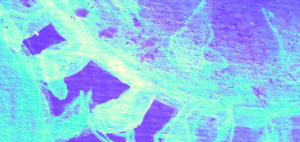A Brief History of Vaccination

Smallpox was, by many accounts, the deadliest human disease of all time killing upwards of 500 million people worldwide. In its deadliest epidemics, it would kill 30-percent of those infected and leave a third of the survivors blind. It’s no wonder that people threatened by the “speckled monster” would risk much to protect themselves against it.
As early as 430 AD, observers noticed that people who had survived smallpox were subsequently immune, and from there it wasn’t a far stretch to conclude that being subjected to the disease may have immunological benefits. It’s not clear where the the inoculation procedure was first developed but populations throughout Africa, China, and India did just that. In a procedure called variolation, a healthy person would have contagious material from a ripe pustule of a smallpox victim inserted into their arms or legs.
The procedure was as risky as it was disgusting, causing 2- to 3-percent mortality and transmission of other disease such as tuberculosis, but people did it to avoid the even riskier proposition of succumbing to the actual disease.
English aristocrat Lady Mary Wortley Montague suffered from smallpox in 1715, then lost her brother to the disease shortly afterward. In 1717, her husband was appointed ambassador to the Ottoman Empire and just weeks after their arrival, Lady Mary learned of the variolation procedure utilized by the Ottoman Court. She immediately had the embassy physician variolate her son and, when they returned to England, her daughter, under the supervision of the royal physicians.
After clinical trials and the successful variolation of several members of the Royal Family, the procedure gained popularity and spread like, well, like contagion.
Half a century later in nearby Gloucestershire, a young Edward Jenner was gaining interest in science and nature. He would later recall hearing that dairymaids never had to worry about getting smallpox because they usually got cowpox, a relatively harmless cousin of the scourge of mankind. This concept stayed with him through his formal medical training and near the end of the century he pondered the idea of intentionally subjecting people to cowpox in order to protect them from the deadly smallpox. In 1796, Jenner found a dairymaid, Sarah Nelms, with cowpox lesions on her hand. He took matter from her lesions and inoculated an 8-year-old boy, James Phipps, with it. The boy developed a mild fever and discomfort in the under arm, but recovered within 10 days. Jenner then subjected the boy to smallpox and he developed no symptoms. Jenner was confident that his inoculation worked to protect the boy from smallpox.

The Royal Society wasn’t convinced however and rejected Jenner’s paper on the subject. He ran more trials and published his own booklet a year later entitled, An Inquiry into the Causes and Effects of the Variolae Vaccinae, a disease discovered in some of the western counties of England, particularly Gloucestershire and Known by the Name of Cow Pox. He named his method after the Latin for cowpox, vaccinia: vaccination.
Jenner was equally revered and reviled for his controversial procedure. He was given awards by the British government but had to endure ridicule such as comics of Jenner turning people into cows through the procedure. Despite the naysayers, vaccination slowly gained favor over variolation and became the standard inoculation in the world within decades. In the 1960s the World Health Organization campaigned to eradicate the disease and followed outbreaks around with world with vaccination programs. By 1977, the world was free of the deadliest disease known to man.
In hindsight, the principle of vaccination is simple: when a person is exposed to molecules that are foreign to the body, called non-self, it will orchestrate an immune response, and it will also develop the ability to quickly respond to a subsequent encounter because of immunological memory. This is a function of the adaptive immune system. Therefore, someone can protect herself by being exposed to an immunogen in a controlled way.
Until the 1880s vaccine/vaccination referred only to the smallpox treatment, but Louis Pasteur developed immunization methods for chicken cholera and anthrax in animals and for human rabies, and suggested that the terms vaccine/vaccination should be extended to cover the new procedures, despite lacking the bovine connection.
The twentieth century saw the field explode with activity. Vaccines were developed for rabies, typhoid, diphtheria, influenza, polio, rubella, and many more diseases, all showing varying levels of success. In general, the concept of vaccination was extremely effective in reducing incidence of any given disease. It is estimated that the modern vaccination has saved over 10 million lives worldwide since 1960 (excluding lives saved by the smallpox vaccine). Vaccines for devastating diseases like malaria and HIV have been elusive for researchers, but the industry has still made its indelible mark on communicable disease and saved millions of lives and unquantifiable suffering in the process.








